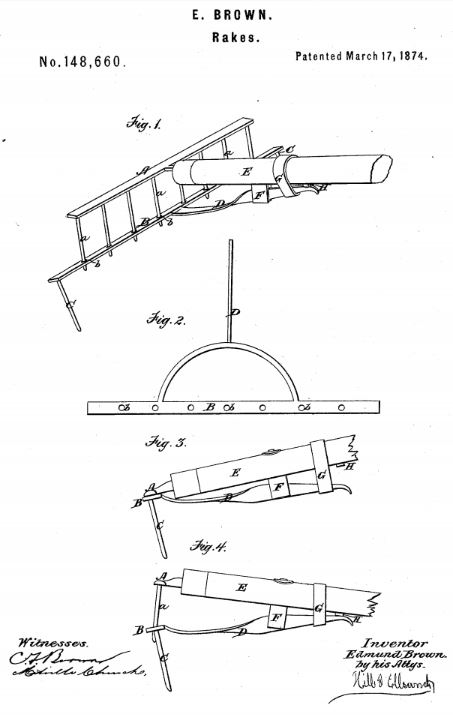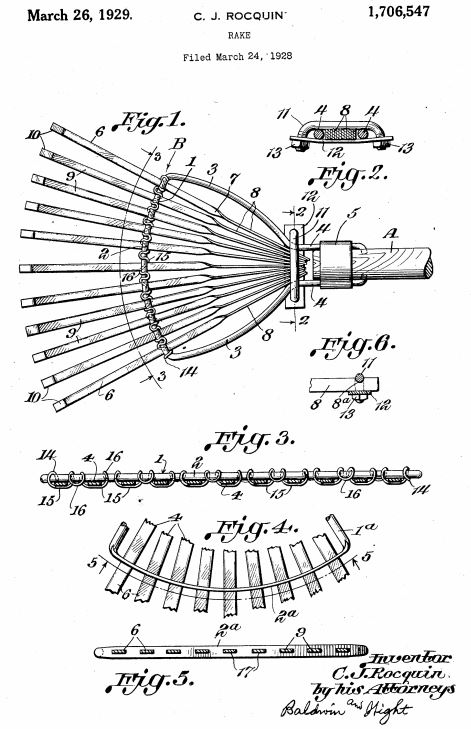It’s officially the first day of fall! For many, this means decorating their home with bright pumpkins and gourds, bringing out their sweaters to prepare for the cooler weather, and enjoying the colorful foliage that comes with the season.
As leaves begin to turn to their yellow, orange, red, and brown hues, it’s also a reminder to homeowners of what is to come– falling leaves. Some prefer to keep leaves on the ground to help put nutrients back in the soil; while others will spend day and night trying to keep the grass as green as possible for as long as possible. For the latter individuals, the rake becomes their closest companion through the season. For this week’s patent history, we’re examining 3 types of historic garden rakes.
1. Edmund Brown – U.S. Patent No. 148,660
One of the first rakes to be issued a patent was invented by Edmund Brown in 1874 (U.S. Patent No. 148,660). This rake was comprised of a bamboo handle and metal teeth. Brown noted other rakes were continually “clogged by the refuse matter which they collect,” which led to the user removing the debris from the rake by hand. Brown’s rake was able to maneuver the debris more conveniently with the “automatic clearing attachment for iron-tooth door-yard rakes.” This attachment removed “all matter that may be collected between the teeth by simply raising the rake from the ground.”

2. C.J. Rocquin – U.S. Patent No. 1,706,547
One of the more popular rakes still used today was invented by C.J. Rocquin and patented in 1929, (U.S. Patent No. 1,706,547). This invention was one of the first rakes that was able to be “manufactured with a minimum number of parts quickly.” The way this rake was structured also made replacing any broken teeth of the rake easier, which was a marketable convenience at the time. Rocquin was later granted five additional patents for improvements in rakes and other tools.

3. Harold O. Eads – U.S. Patent No. 3,724,188
Harold O. Eads was granted a patent in 1973 for another popular type of rake still used today, the plastic rake (U.S. Patent No. 3,724,188). Eads worked for the Ames Company, one of the biggest rake manufacturers in the 1970s. Upon inventing this rake, he sought to “provide a rake which has all of the advantages of both steel tine rakes and bamboo rakes, without the disadvantages thereof.” Eads was also granted a design patent for the rake head in 1974 (U.S. Patent No. Des. 233,305).

Looking for more fall-themed intellectual property history? Kick Off the Football Season with These 5 Historic Patents or learn more about Halloween and Intellectual Property.
Suiter Swantz IP is a full-service intellectual property law firm providing client-centric patent, trademark, and copyright services. If you need assistance with an intellectual property matter and would like to speak with one of our attorneys, please contact us at info@suiter.com.
